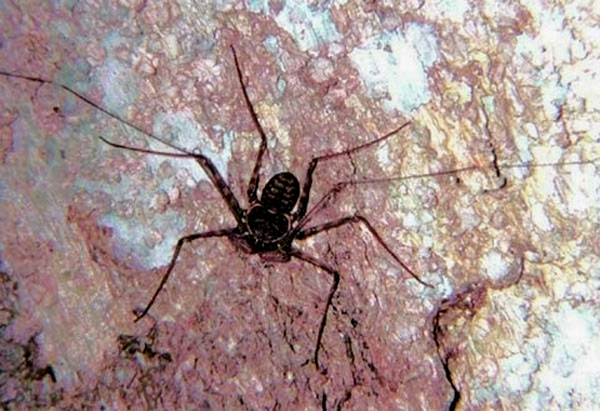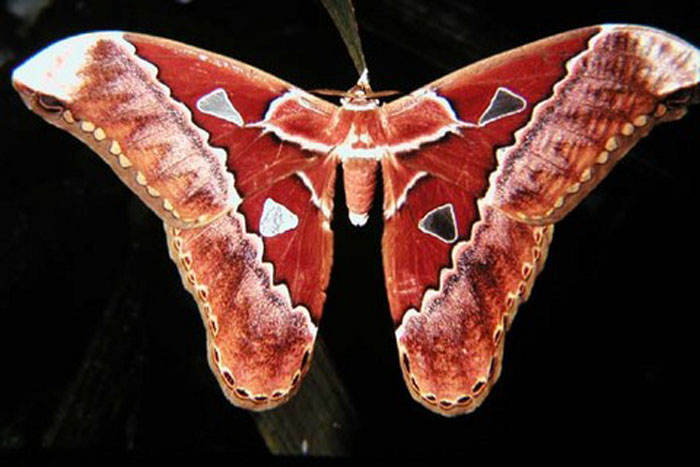
HEADLAMPING
For NIGHTTIME NATURE PHOTOGRAPHY
by Jerome Rovner
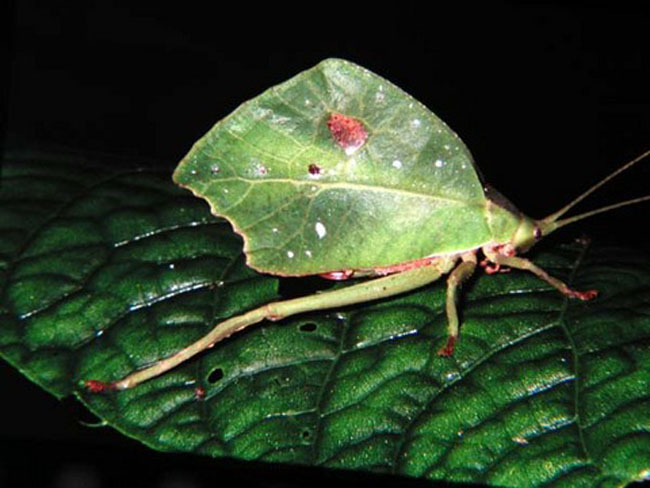
It’s easy to visit a world filled with species that you may never have had a chance to photograph before. After sunset, nocturnal animals come out “on stage” in fields, forests, and deserts. The one item to add to your gear is a headlamp. Unlike a flashlight, a headlamp allows both hands to be free for taking photos.
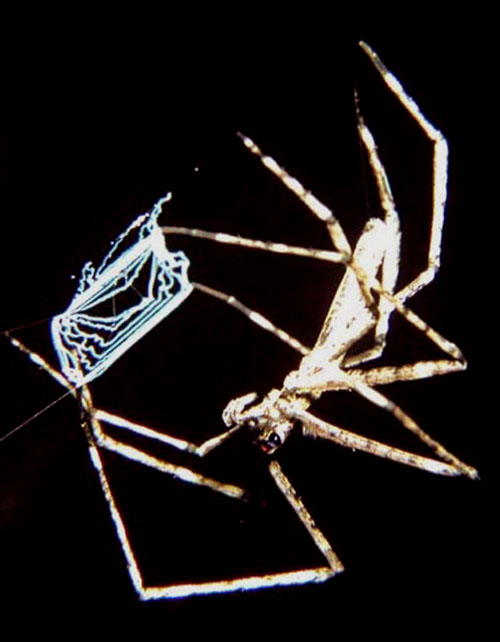
NET-CASTING SPIDER (black background)
As a spider enthusiast beginning in my teenage
years, I was fascinated when first reading about the nocturnal net-casting
spider of the tropics and subtropics. To see its prey, it has the largest
eyes of any spider. I was excited about finally getting the chance to
observe and photograph this remarkable spider one night in Gainesville,
Florida.
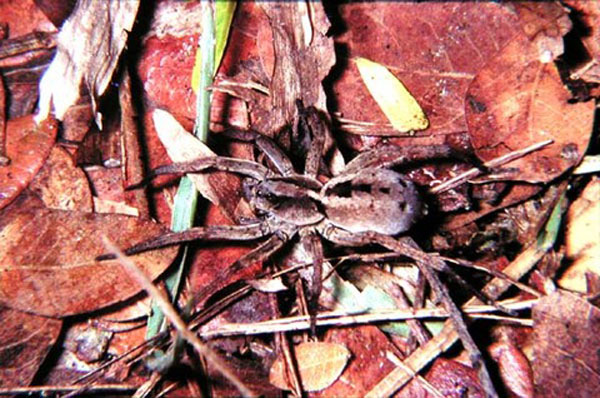
Most—probably all—of the headlamps that are available
in discount stores or hunting/fishing shops usually aren’t powerful
enough, no matter what claims are made on the package. Many of them
use AA or even AAA batteries and usually have LEDs rather than a typical
flashlight bulb. If you find one that does use a flashlight bulb, it
likely will have 2 D cells for power—not bad, but you can do better.
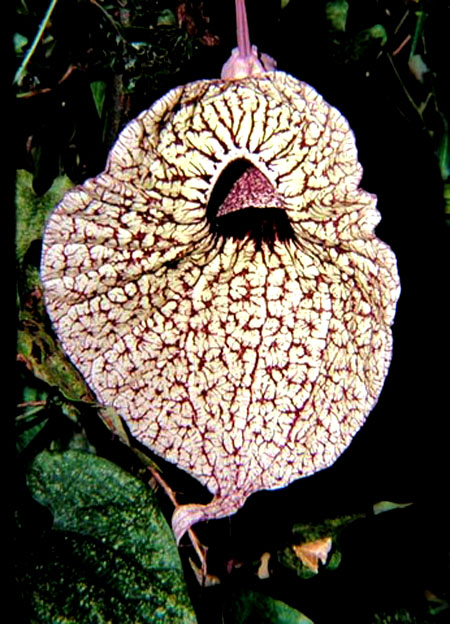
FLOWER
There are tropical flowers that only bloom at night—yet one more
reason to go headlamping. This extraordinary flower was impressive in
both pattern and size (about 8 inches in height.)
I consider myself lucky to have seen and photographed it, but did not
have to trek far for the opportunity. It was just a few dozen yards
from one of the lodge buildings at Banana Bank, Belize.
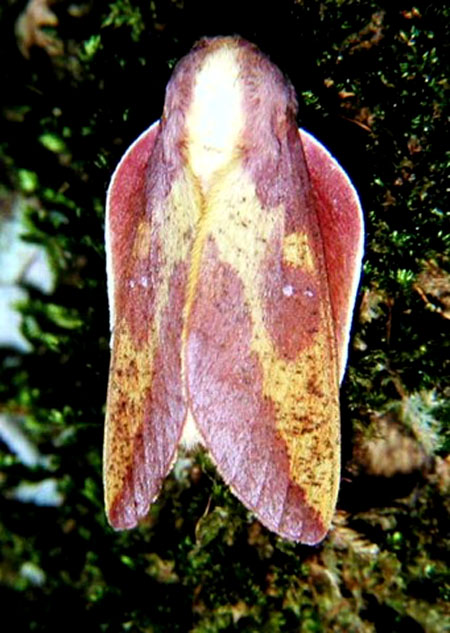
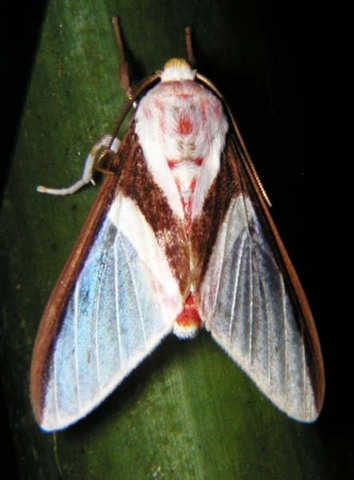
For the past several decades, I’ve used a unit powered
by 4 D cells, yielding a powerful beam for spotting subjects and illuminating
them well when shooting photos. It’s the Justrite Electric Head
Lantern, sold by
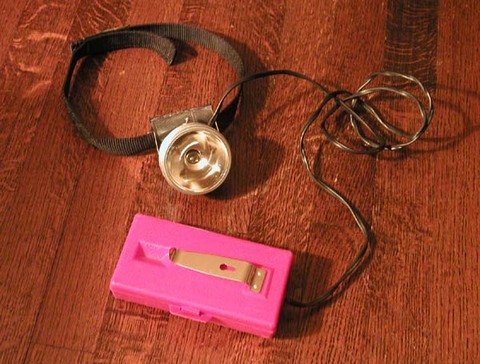
Forestry Suppliers (www.forestry-suppliers.com). An elastic headband holds the light in position above your forehead. A 4-ft. cord connects the light to a corrosion-proof, polypropylene battery case that clips onto your belt. (My preference is to carry the battery case in a waist pack. The belt clip doesn’t always suffice if I have to squat to take a photo and the battery case gets pushed upward off my belt.) The headlamp can be purchased without the battery case, for those who wish to use a single 6V battery instead of 4 D cells (fewer contact points in the circuit).
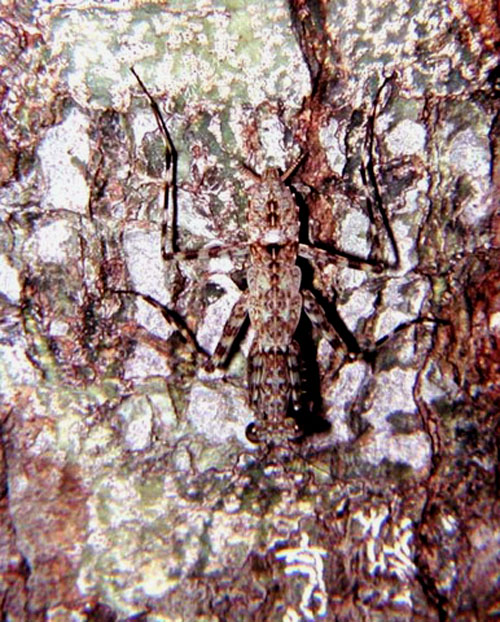
BARK MANTID
It’s easy to miss some really neat creatures because of their
camouflage. Sometimes, they’re easier to spot within the circle
of a headlamp beam. I was really surprised to see that a mantid would
be “preying” in the dark, resting on a tree trunk in a Belizean
rain forest.
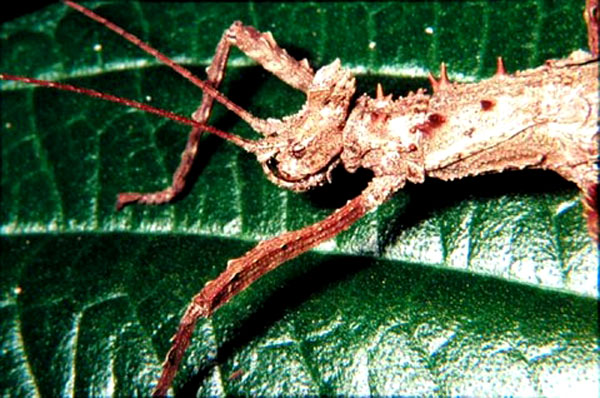
Two extra items will keep your outing from turning into an unpleasant
experience: (1) An empty film canister with a couple of spare bulbs
(cushioned with tissue paper filler). (2) A Maglite or similar flashlight,
so you can see what you’re doing if you have to replace a burned-out
headlamp bulb. Also, it’s never a good idea to depend on a single
light source during a nighttime nature walk. Should your only light
source fail in a forest environment--especially a tropical rain forest--you’ll
not be able to see anything and therefore will have to wait until morning
to find your way back.
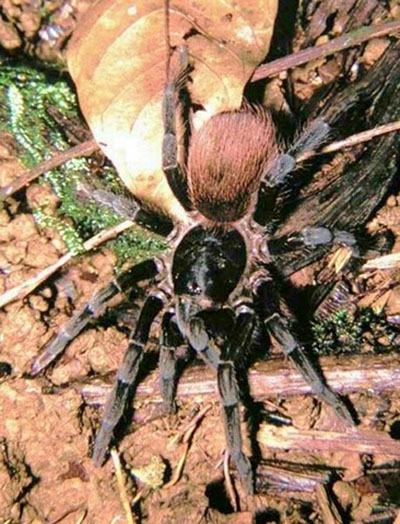
TARANTULA
In the daytime, tarantulas are hidden deep in their burrows. At night,
they can be partially seen and photographed face-on, as they wait for
prey at the burrow entrance. What a thrill to see and photograph a male
redrump tarantula wandering completely in the open on the floor of the
Costa Rican rain forest.
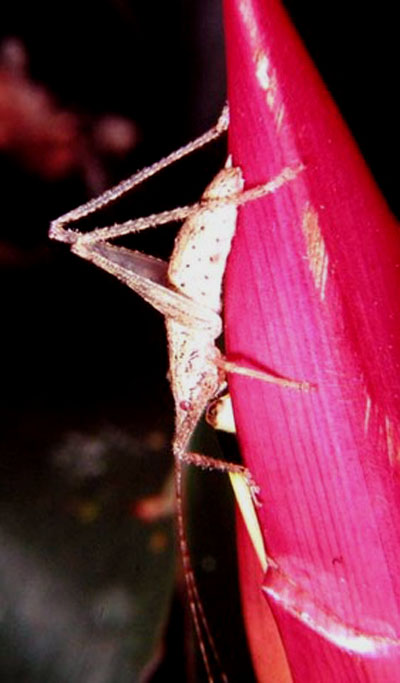
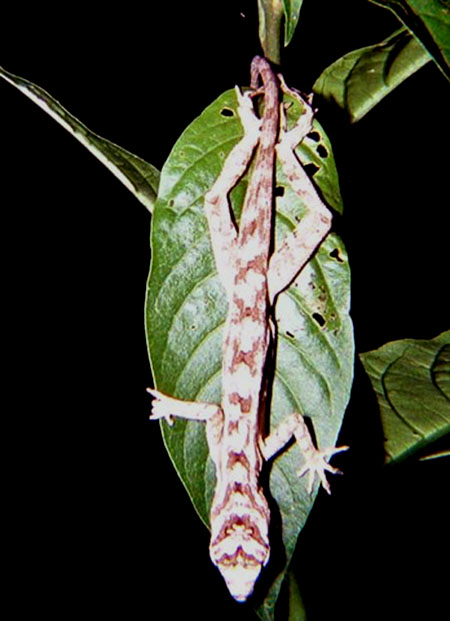
A unique experience awaits the nighttime nature photographer.
Securely place the headlamp on and tilt the light so as to throw an
illuminated spot about 12 to 20 feet away. As you scan the environment
with your beam, jewel-like points of light may catch your attention.
The eyes of wolf spiders and many other wandering spiders sharply reflect
a greenish light back to your field of view. Six of the eight eyes of
such spiders have a reflecting layer (the tapetum) behind the photoreceptive
layer. It’s a visual sensitivity-increasing arrangement like that
of cats and other nocturnally active mammals. In some wandering spiders,
this and other features of their visual system enables them to utilize
starlight (!) as their sole illumination source for orientation and
prey capture when no moonlight is available.
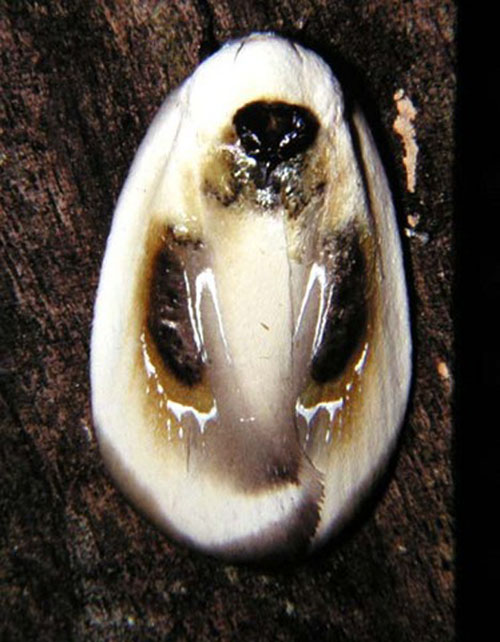
BIRD-DROPPING MOTH
What a peculiar object: a perfectly shaped bird-dropping—apparently
still fresh, as the seemingly wet surface suggested. Well no. When I
approached and looked closely, it turned out to be a moth at rest in
the Amazonian rain forest of Peru. And it hadn’t been raining
recently, so the “wetness” was just part of this moth’s
remarkable camouflage.
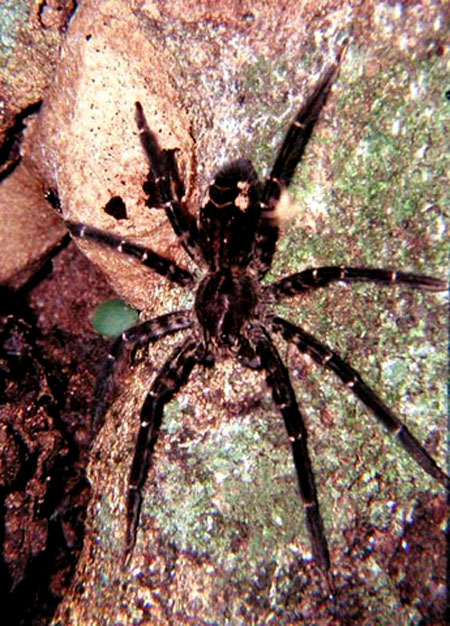
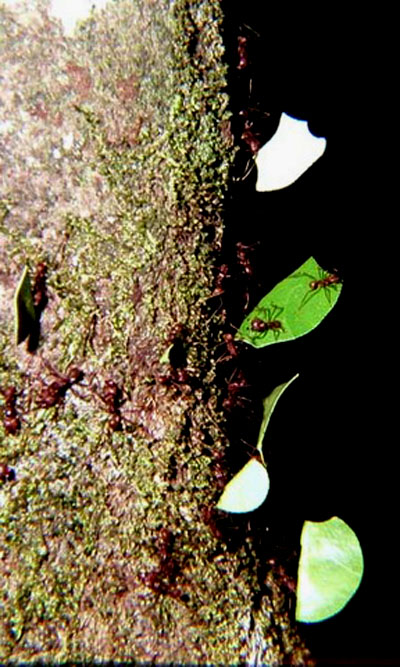
It’s fun to locate well-camouflaged wandering spiders
that would be very hard to find in the daytime. When you spot an eye
reflection, which can be seen at a remarkably great distance from even
a tiny spider, you then walk slowly toward the light source, keeping
the glowing dot precisely in the center of your field of view. Once
you’re close to the substrate where the spider is resting, you’ll
no longer be able to see the eye reflection. Instead, you’ll now
be fully illuminating a small area to search for the spider, as if under
daylight conditions.
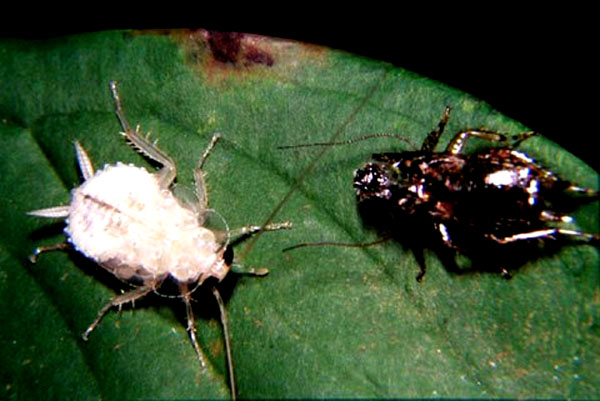
COCKROACHES
What an odd sight: a pair of cockroaches—one nearly black, the
other white—sharing the same leaf in a Belizean rainforest. As
I looked through the viewfinder, I realized that a newly molted individual
was resting near its just-molted cuticle.
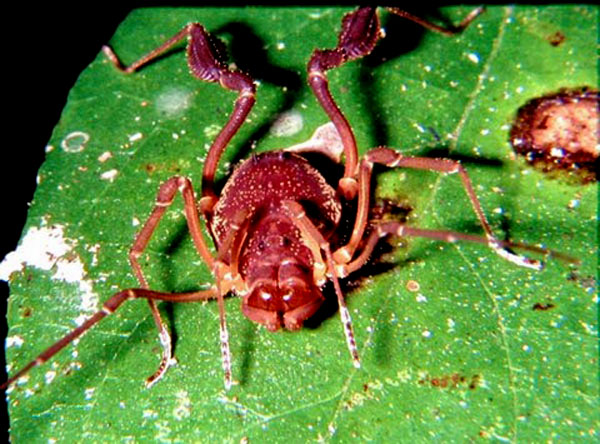
This endeavor is much more challenging on a humid summer night,
when dewdrops glisten everywhere in your field of view. However, with
practice, you’ll eventually learn to distinguish the greenish
spider eyes from the colorless dewdrops. By the way, you’ll also
find resting insects when you are headlamping. In particular, many moths
have a tapetum-like layer in their eyes that produces an orange-colored
reflection. Of course, your headlamp also will enable you to spot and
photograph a wide variety of larger
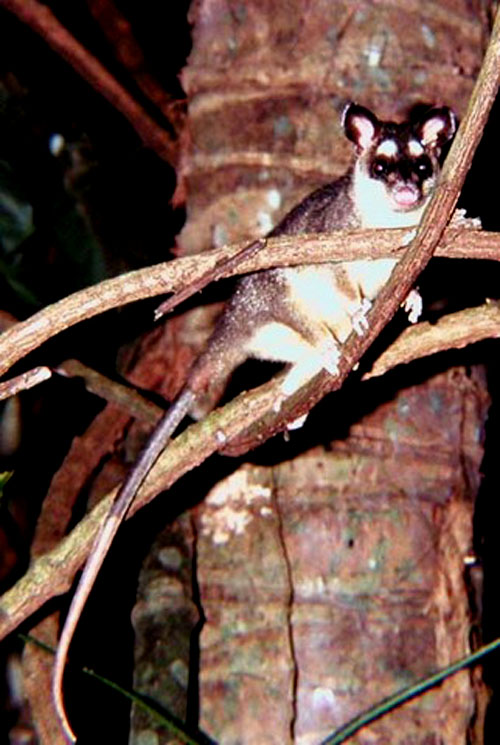
OPOSSUM
Although I’m a macro-man, I also get a kick out of the relatively
rare opportunity of getting shots of amphibians, reptiles, birds, and
mammals. One night in Belize, this four-eyed opossum showed up in the
beam of my headlamp as it clambered about in the trees. Luckily, unlike
a nearby armadillo of which I couldn’t get a photo, this tropical
species of opossum didn’t move away as I slowly approached and
took flash-illuminated photos.
nocturnally active animals—frogs, snakes, opposums—making
for a night of surprising finds and interesting photographs.
